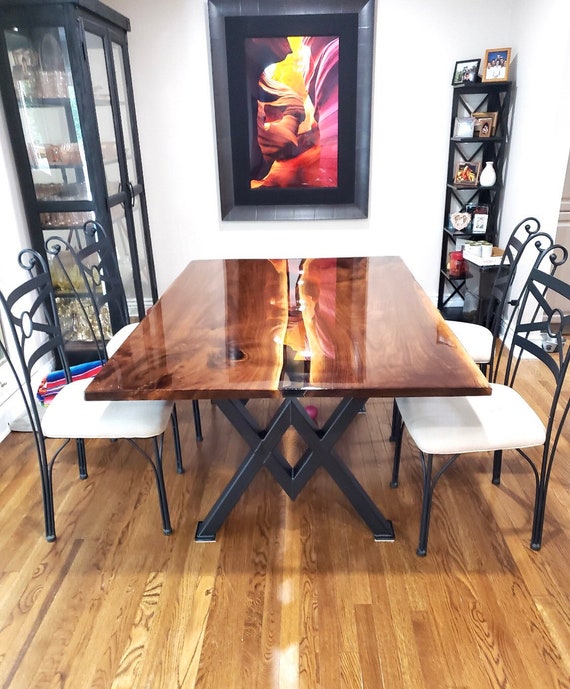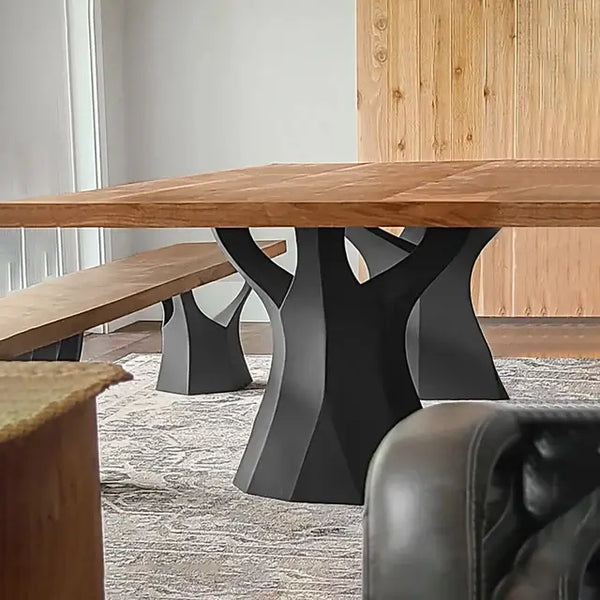Add Charm and Elegance to Your Space with Distinct Dining Room Table Legs
Add Charm and Elegance to Your Space with Distinct Dining Room Table Legs
Blog Article
From Traditional to Modern: Locate the Perfect Dining Area Table Legs for Your Design
While timeless layouts such as cabriole and turned legs stimulate a feeling of timeless class, contemporary designs like barrette and geometric options provide a possibility for striking visual passion. As you consider these aspects, the concern continues to be: exactly how can you flawlessly integrate these diverse leg styles to produce an unified eating experience?
Comprehending Table Leg Styles
The variety of dining-room table leg styles can substantially affect both the visual appeals and performance of the room. Each leg design adds one-of-a-kind aesthetic aspects and functional functions, satisfying diverse layout choices and usage demands. Recognizing these designs is critical for picking the right table that aligns with your total interior decoration vision.
For instance, tapered legs provide a clean, timeless appearance that can enhance a space's beauty, while pedestal bases give security and take full advantage of legroom, making them ideal for smaller sized spaces. Barrette legs, a trademark of mid-century contemporary style, introduce an industrial panache, permitting for an airy, open feel. Likewise, trestle legs evoke rustic appeal, offering durable support and a feeling of timelessness.
Moreover, the option of materials plays a considerable duty. Wooden legs can bring warmth and appearance, whereas metal choices typically communicate a streamlined, modern vibe. Inevitably, comprehending table leg styles is crucial for producing a cohesive dining location that shows personal design while guaranteeing usefulness and comfort. By thoughtfully considering these components, you can enhance both the useful and aesthetic appeal of your dining room.
Conventional Table Leg Options
When choosing dining-room table legs, typical choices often embody ageless sophistication and craftsmanship. These styles mirror an abundant heritage and a dedication to top quality, making them perfect for those that appreciate classic looks.
Among the most iconic conventional leg styles is the cabriole leg, defined by its graceful rounded form. This layout often features decorative carvings and is most frequently found in Queen Anne and Chippendale furniture. Another preferred choice is the turned leg, which boasts a series of smooth, rounded shapes that supply a classic look while maintaining stability.
Furthermore, the straight leg, while simple, supplies a basic and strong framework that can blend seamlessly with a variety of tabletop designs. For those attracted to ornate outlining, claw-and-ball feet legs stimulate a feeling of majesty and can work as a sensational prime focus in any eating space.
Lastly, stand bases, although not purely legs, offer an alternate traditional alternative that permits enough legroom and can be beautifully sculpted. Each of these conventional leg styles adds to the total setting of an eating room, weding function with aesthetic appeal.

Modern Table Leg Layouts
Modern table leg layouts offer a see page varied variety of designs that highlight cutting-edge materials and tidy lines. These designs often focus on functionality while functioning as striking prime focus within a dining room. Minimal aesthetic appeals prevail, with legs crafted from materials such as steel, glass, and crafted wood, which contribute to a airy and modern feeling.
One go now prominent design is the barrette leg, identified by its slender, tapered structure that offers stability without frustrating the table top (dining room table legs). This style is commonly discovered in mid-century modern furniture and can easily enhance various eating table shapes. One more pattern is using geometric shapes, where legs may take on unbalanced or angular forms, adding visual passion and a touch of creativity

Blending Designs for Unique Rooms
Often, homeowners look for to produce special eating spaces that reflect their individual design by blending various style components. This technique enables for the incorporation of varied visual appeals, resulting in a harmonious yet distinctive setting. Pairing a rustic wood table with smooth, contemporary steel legs can produce an appealing comparison that raises the room's general allure.
In addition, integrating vintage table legs with contemporary tabletops can stimulate a sense of history while preserving a modern perceptiveness. Such combinations not just display individual preference but likewise motivate imagination, permitting home owners to curate an area that really feels both personal and welcoming.
Color plays an important duty in this blending procedure; selecting table legs that complement or comparison with the existing color design can boost visual passion. For instance, whitewashed legs can soften the daring of a dark table surface, producing a well balanced aesthetic.
Tips for Selecting the Right Legs
Picking the right table legs is vital for attaining both performance and aesthetic appeal in your dining room. Begin by considering the overall design of your area. Conventional setups gain from legs that include intricate carvings or transformed layouts, while modern spaces may require smooth, minimalist designs.
Following, assess the height and stability of the legs. dining room table legs. Basic table vary in between 28 to 30 inches in height, so guarantee the legs match this measurement for convenience. Furthermore, durable products, such as wood or steel, can boost security and long life
Evaluate the leg form too-- options include right, tapered, or stand layouts. Straight legs offer a classic look, while tapered legs can include a touch of beauty. Pedestal bases give enough legroom and are ideal for smaller rooms.
Verdict
In summary, selecting the suitable dining space table legs requires mindful factor to consider of both standard and modern styles. By integrating leg style, height, and material with the overall decor, a cohesive and inviting environment can be achieved.
The selection of dining area table leg designs can significantly affect both the aesthetic appeals and functionality of the room. Ultimately, comprehending table leg styles is essential for developing a natural eating area that shows individual design while making certain practicality and comfort.One of the most renowned conventional leg designs is the cabriole leg, characterized by its elegant curved shape. Straight legs offer a traditional look, while tapered legs can add a touch of beauty.In summary, picking the perfect dining space table legs requires careful consideration of both modern and traditional styles.
Report this page